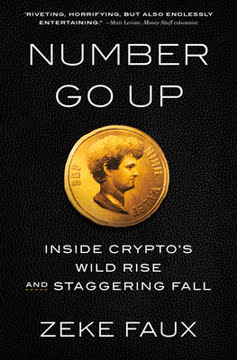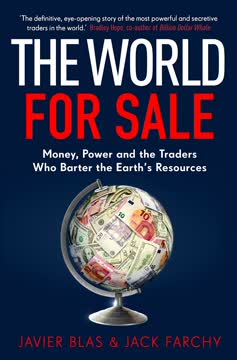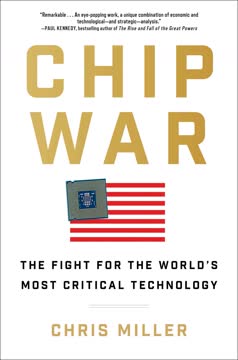Key Takeaways
1. Arif Naqvi: The Rise of a Private Equity Mogul in Emerging Markets
"Arif was the Key Man. This title, which private equity firms give to their most important executives, had even greater significance in Arif's case because he was offering to solve so many of humanity's problems."
From Karachi to global influence. Arif Naqvi's journey began in Karachi, Pakistan, where he attended the prestigious Karachi Grammar School. His ambition and networking skills were evident from an early age, as he built connections with influential classmates who would later support his ventures. After studying at the London School of Economics, Naqvi worked in various financial roles before founding Abraaj Capital in Dubai in 2002.
Emerging markets pioneer. Naqvi positioned Abraaj as a unique bridge between Western investors and emerging markets, particularly in the Middle East, Africa, and South Asia. He leveraged his understanding of these regions and his charismatic personality to attract billions of dollars in investment. Abraaj's early successes, such as the profitable sale of Aramex, a Middle Eastern logistics company, cemented Naqvi's reputation as a visionary investor in developing economies.
2. Abraaj's Ambitious Vision: Solving Global Poverty Through Capitalism
"To do good does not necessarily mean to compromise returns."
Impact investing pioneer. Arif Naqvi championed the idea that private equity could simultaneously generate substantial profits and address social issues in developing countries. This approach, known as impact investing, aligned with growing interest from Western investors and governments in using market-based solutions to tackle global challenges.
Targeting the UN's Sustainable Development Goals. Abraaj positioned itself as a key player in achieving the United Nations' ambitious plan to end global poverty by 2030. Naqvi claimed that Abraaj could help fill the $2.5 trillion annual funding gap needed to reach these goals by investing in healthcare, education, and infrastructure in emerging markets. This vision attracted support from influential figures and institutions, including:
- Bill Gates and the Gates Foundation
- The World Bank and its International Finance Corporation (IFC)
- Government development finance institutions from the US, UK, and France
3. The Illusion of Success: Abraaj's Fraudulent Financial Practices
"Abraaj didn't have any money left because he had stolen it."
Misuse of investor funds. As Abraaj's financial situation deteriorated, Naqvi and his associates began diverting money from investment funds to cover operational expenses and maintain the illusion of success. Key fraudulent practices included:
- Commingling funds from different investors and using them for unauthorized purposes
- Inflating the valuation of Abraaj's investments to attract new capital and generate higher management fees
- Creating fake bank statements and financial reports to deceive auditors and investors
The Abraajery. A secret financial operation within Abraaj, dubbed the "Abraajery," was used to manage the complex web of illicit money transfers. This system allowed Naqvi to move funds between various accounts and entities, making it difficult to trace the true flow of money.
4. Impact Investing: A New Paradigm for Profit and Social Good
"Impact investing promised everything to everyone. It was possible to invest for profit and help the poor at the same time."
Origins of impact investing. The concept of impact investing emerged from discussions among philanthropists and investors seeking to address global challenges more effectively. Key events in its development included:
- The 2007 Rockefeller Foundation meeting at Villa Serbelloni, where the term "impact investing" was coined
- Growing interest from major financial institutions, such as JPMorgan Chase, in promoting impact investing as a new asset class
Challenges and criticisms. While impact investing gained popularity, it faced skepticism and challenges:
- Difficulty in measuring and verifying social impact alongside financial returns
- Concerns about "impact washing," where companies exaggerate their positive social effects
- Questions about whether market-based solutions could effectively address systemic issues of poverty and inequality
5. Karachi Electric: Abraaj's Flagship Investment and Its Challenges
"You could not have designed a more troubled company if you had set your mind to it."
A high-stakes turnaround attempt. Abraaj's 2009 acquisition of Karachi Electric, Pakistan's largest electricity provider, was seen as a defining test of Naqvi's vision. The company faced numerous challenges:
- Chronic power outages affecting millions of residents
- Widespread electricity theft and non-payment of bills
- Inefficient infrastructure and outdated equipment
Mixed results and controversy. While Abraaj made some improvements to Karachi Electric's operations, the investment remained controversial:
- Layoffs and disputes with labor unions led to violent protests
- Allegations of political influence and corruption in the company's management
- Ongoing financial struggles and debates over electricity pricing
6. The Arab Spring: Arif Naqvi's Opportunistic Response to Regional Turmoil
"As tensions in the Middle East flared once more, Arif's message of progress through entrepreneurship seemed more appealing than ever."
Positioning Abraaj amidst upheaval. When the Arab Spring protests erupted across the Middle East in 2010-2011, Naqvi saw an opportunity to promote Abraaj's vision of economic development through private investment. He organized high-profile events, such as the "Celebration of Entrepreneurship" conference in Dubai, to showcase the potential of the region's young entrepreneurs.
Attracting Western support. Naqvi's message resonated with Western governments and institutions seeking stability in the Middle East:
- The Obama administration embraced Abraaj as a partner in promoting entrepreneurship in the region
- Abraaj received significant funding from the U.S. Overseas Private Investment Corporation (OPIC)
- Naqvi's influence grew in Washington D.C., where he cultivated relationships with key political figures
7. The Cult of Abraaj: Arif's Leadership Style and Company Culture
"Arif was a king, doling out little tidbits to begging peasants, like promoting people who weren't on a list for promotion or double promoting them in front of everyone."
Charismatic and controlling leadership. Naqvi's management style combined charm, manipulation, and intimidation:
- Lavish company events and parties fostered loyalty and a sense of exclusivity
- Unpredictable behavior, including public humiliation of employees, kept staff on edge
- A small inner circle of trusted associates helped maintain secrecy around financial operations
The price of loyalty. Abraaj employees faced intense pressure to conform to Naqvi's vision and demands:
- High salaries and the promise of future wealth kept many staff from questioning company practices
- Those who raised concerns or attempted to leave often faced threats or manipulation
- The company culture was likened to a cult, with Naqvi as its charismatic and unquestionable leader
8. Global Elite Endorsement: How Abraaj Gained Credibility
"Arif was in his element."
Davos darling. Naqvi became a fixture at the World Economic Forum in Davos, where he skillfully networked with global business and political leaders. His ability to articulate a vision for emerging markets investment resonated with the Davos crowd, enhancing Abraaj's reputation.
Strategic partnerships and affiliations. Abraaj's credibility was bolstered by associations with respected institutions and individuals:
- Collaborations with the Bill & Melinda Gates Foundation
- Board memberships for Naqvi at organizations like the UN Global Compact and Interpol Foundation
- Academic case studies and endorsements from institutions like Harvard Business School
- Positive media coverage in publications such as Forbes and The New York Times
9. The Unraveling: Whistleblowers and Investigations Expose Abraaj's Fraud
"Do your due diligence properly and ask the right questions. You will be amazed what you discover."
Initial suspicions. In late 2017, concerns were raised by investors in Abraaj's healthcare fund, including the Gates Foundation, about the misuse of capital. Key red flags included:
- Unexplained delays in deploying invested capital
- Inconsistencies in financial reporting and bank statements
Escalating investigations. As more investors began to scrutinize Abraaj's finances, the extent of the fraud became apparent:
- Forensic audits revealed hundreds of millions of dollars missing from investor funds
- Whistleblowers within Abraaj provided evidence of systematic financial misconduct
- Media investigations, particularly by the Wall Street Journal, brought public attention to the scandal
10. The Aftermath: Arif Naqvi's Arrest and the Collapse of Abraaj
"Arif Naqvi was being charged under an American law created to prosecute criminal gangs like the mafia."
Legal consequences. In April 2019, Naqvi was arrested in London based on charges filed by U.S. prosecutors:
- Accusations included fraud, theft, and attempting to bribe Pakistani government officials
- Naqvi faced potential extradition to the United States and up to 291 years in prison if convicted on all charges
The fall of Abraaj. The once-celebrated firm rapidly collapsed:
- Abraaj entered liquidation proceedings in the Cayman Islands
- Investors scrambled to recover their funds, with many facing significant losses
- The scandal sent shockwaves through the impact investing and emerging markets finance sectors
11. Lessons Learned: The Dangers of Unchecked Ambition in Finance
"Greed."
The limits of self-regulation. Abraaj's collapse highlighted weaknesses in the oversight of private equity firms, particularly those operating across multiple jurisdictions:
- Auditors and regulators failed to detect years of financial misconduct
- The opacity of private equity operations made it difficult for investors to verify claims of success
Questioning the impact investing model. The Abraaj scandal raised important questions about the viability and integrity of impact investing:
- Can profit motives truly align with social impact goals in all cases?
- How can social impact be measured and verified alongside financial returns?
- What safeguards are needed to prevent "impact washing" and ensure accountability?
The role of elite networks. Abraaj's rise and fall demonstrated the power and potential dangers of global elite networks:
- Naqvi's connections with political and business leaders provided credibility and access to capital
- These same networks initially insulated Abraaj from scrutiny, allowing the fraud to continue for years
- The scandal exposed the need for more diverse voices and perspectives in global financial decision-making, particularly from the communities impact investors claim to serve
Last updated:
FAQ
What's The Key Man about?
- True Story of Deception: The Key Man tells the story of Arif Naqvi, founder of Abraaj Group, who deceived global investors with a façade of success and philanthropy.
- Global Financial Elite: It explores how Naqvi convinced the elite that he could solve humanitarian issues through capitalism, while orchestrating a massive fraud.
- Impact of Globalization: The book examines the complexities of globalization and the challenges of investing in developing countries.
Why should I read The Key Man?
- Insight into Private Equity: Gain a rare glimpse into the world of private equity and the ethical dilemmas involved in impact investing.
- Lessons on Trust and Deception: Learn about the dangers of blind trust in charismatic leaders and the importance of due diligence.
- Engaging Narrative: The book combines biography, financial thriller, and social commentary, making it engaging for finance professionals and general readers.
What are the key takeaways of The Key Man?
- Cautionary Tale: Emphasizes the need for skepticism and thorough investigation in high-stakes investments, especially in emerging markets.
- Impact Investing Risks: Highlights the complexities and potential pitfalls of impact investing, where good intentions may not lead to positive outcomes.
- Globalization's Dark Side: Discusses corruption and exploitation in globalization, which can undermine efforts to improve lives in developing countries.
Who is Arif Naqvi, and what role does he play in The Key Man?
- Charismatic Leader: Naqvi is portrayed as a charismatic entrepreneur who rose to prominence in global finance.
- Master of Deception: He orchestrated a massive fraud, misusing investor funds while maintaining a public image of benevolence.
- Symbol of Global Finance: Naqvi embodies the complexities of modern capitalism, where profit pursuit can overshadow ethics.
How did Abraaj Group rise to prominence?
- Strategic Acquisitions: Abraaj gained prominence through acquisitions in emerging markets, particularly in healthcare and consumer goods.
- Strong Investor Relations: Attracted significant investments from high-profile investors due to Naqvi's persuasive pitches.
- Public Relations Mastery: Naqvi's storytelling and PR skills built Abraaj's reputation as a socially responsible firm.
What led to the downfall of Abraaj Group?
- Financial Mismanagement: Naqvi's extravagant spending and poor management led to a cash crunch, prompting deceptive practices.
- Loss of Investor Trust: As financial troubles mounted, investors questioned Abraaj's practices, leading to a loss of trust.
- Legal Consequences: Naqvi's fraudulent activities led to legal investigations and his eventual arrest.
What is impact investing as discussed in The Key Man?
- Definition of Impact Investing: Investments made to generate positive social and environmental impact alongside financial returns.
- Naqvi's Approach: Used impact investing to attract funds, promising to address poverty and healthcare issues while generating profits.
- Risks and Challenges: Highlights the potential for fraud and mismanagement in impact investing, as exemplified by Naqvi's actions.
How did the culture at Abraaj contribute to its downfall?
- Toxic Work Environment: A culture of fear and intimidation stifled dissent and allowed unethical practices to flourish.
- Focus on Image Over Substance: Executives prioritized reputation over ethical business practices, leading to harmful decisions.
- Lack of Accountability: Absence of strong governance structures enabled executives to operate without oversight.
What were the main fraudulent activities at Abraaj?
- Misuse of Investor Funds: Funds intended for healthcare investments were diverted to cover operational costs and personal expenses.
- Inflated Valuations: Executives manipulated valuations to present a false picture of financial health, misleading investors.
- Lack of Transparency: A culture discouraging transparency and accountability allowed fraudulent activities to thrive.
How did Abraaj's collapse impact its investors?
- Loss of Trust: Investors lost significant money and trust in the private equity sector due to Abraaj's fraudulent activities.
- Legal Repercussions: Investors faced challenges in recovering funds, highlighting complexities in investment agreements.
- Reevaluation of Impact Investing: The collapse prompted a reevaluation of impact investing practices and the need for stricter regulations.
What lessons can be learned from The Key Man?
- Due Diligence is Crucial: Emphasizes the importance of thorough due diligence before investing in any fund.
- Watch for Red Flags: Highlights the need to be vigilant for signs of mismanagement or unethical behavior.
- Ethics Matter: Reminds that ethical considerations should not be sidelined in the pursuit of profit.
What are the best quotes from The Key Man and what do they mean?
- “To do good does not necessarily mean to compromise returns.”: Encapsulates Naqvi's philosophy of impact investing, foreshadowing ethical dilemmas.
- “There is no one so compelling as a mad man or a con man.”: Reflects the allure of charismatic leaders who captivate while hiding true intentions.
- “The only problem, according to the U.S. Department of Justice, was that Arif was a liar and a thief motivated by criminal ambition.”: Highlights the contrast between Naqvi's public persona and his actions, emphasizing deception.
Review Summary
The Key Man is a well-researched account of Arif Naqvi and the Abraaj Group's rise and fall. Readers praise the book's engaging narrative and insights into private equity and impact investing. Many found it a page-turner, comparing it to other financial scandal exposés. Critics noted repetitive comparisons and occasional jumps in timeline. The book explores themes of greed, deception, and the flaws in "capitalism for good." While some wished for more details on the fraud itself, most reviewers found it an informative and compelling read.
Similar Books










Download PDF
Download EPUB
.epub digital book format is ideal for reading ebooks on phones, tablets, and e-readers.




